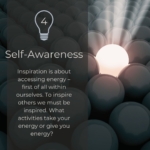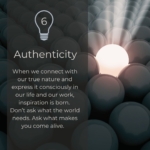The Workplace as a Classroom for Self-Development
Work harder on yourself than you do on your job. It was a phrase that changed Jim Rohn’s life. As the legendary personal development speaker and author famously said, “If you work on your job, you’ll make a living. If you work on yourself, you’ll make a fortune.”
The best leaders are committed to life-long learning. They understand that the greatest gift they bring to relationships is a stronger, wiser, more self-aware person. As people grow and improve their capabilities, they amplify their impact.
Where do you go to learn? We’re conditioned to learn by going somewhere: to school, to university or technical college, to the internet, to articles, to books.
While these are all great sources of information and learning, what if we could also make life itself a classroom, and our experiences the curriculum? This mindset could revolutionize how we perceive the challenges we face. Every “problem” we encounter would be seen as an opportunity for personal growth. Every setback a chance to learn. Everything that happens to us could be viewed as happening for us.
What if all those things we find ourselves complaining about are presenting themselves as lessons? What if all those people we gossip about are there to teach us something?
Have you ever noticed that if you don’t get the lesson, you keep repeating the class with the same experiences? It’s like Bill Murray in the classic movie Groundhog Day. The events kept repeating themselves until he understood the lesson he was meant to get.
Here are three strategies for turning your workplace into a classroom for self-development:
- Assess Your Situation. Take a close look at your work environment to discover the potential for growth it holds. Take an inventory of your frustrations, stuff you complain about, and the things you dislike about your job. List the people that irritate you and those you gossip about. What stresses you? What overwhelms you? What activates your fear response in your work environment? (You can take a similar inventory in your personal life.)
- Renew Your Perspective. Start embracing challenges by seeing problems as stepping stones rather than roadblocks along your path to success. Ask, “What lessons am I meant to get from this problem?” “What is this difficult, insensitive boss here to teach me?” “How can I respond differently to those putting all these demands on me?” “What lesson is to be learned from not being appreciated?” Maybe you are meant to learn to be more clear or brave or kind. Maybe what’s required is more commitment or self-care or compassion. Instead of hiding by complaining or gossiping, start facing reality rather than running from it.
- Take Action. Decide how you will apply the lesson you have learned. Knowing that growth lies outside your comfort zone, what risks will you take? What actions are required? Who will support you? How will you hold yourself accountable? Apply the lesson and contribute to a healthier, more vibrant workplace culture. If you think it’s time to exit, be sure you’re not escaping from a difficult learning opportunity. Be sure you get the lesson before you leave. Otherwise, you’ll meet the same experience in your next job (or relationship). Regardless, if you’re committed, you’ll find a way. If you aren’t, you’ll find an excuse.










